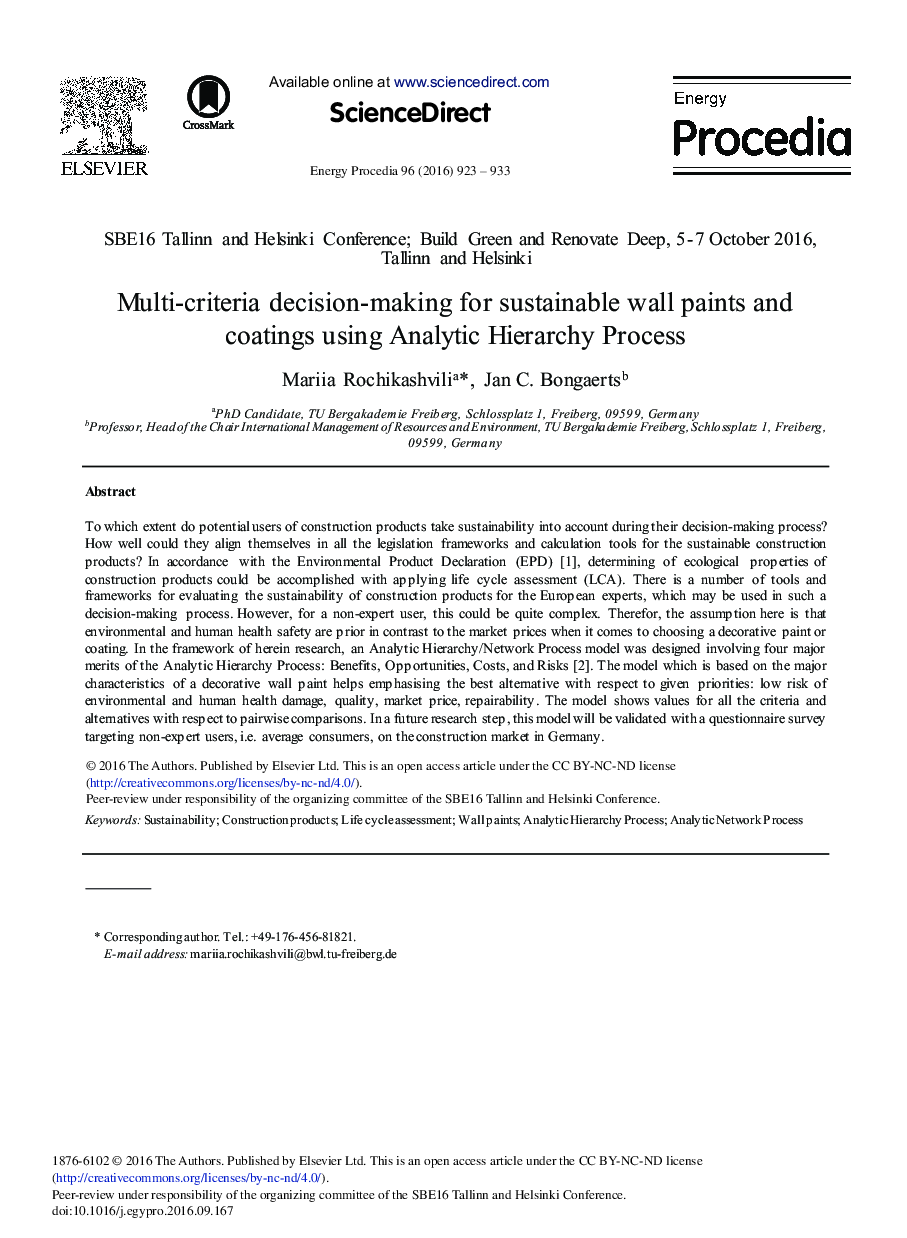| Article ID | Journal | Published Year | Pages | File Type |
|---|---|---|---|---|
| 5446785 | Energy Procedia | 2016 | 11 Pages |
Abstract
To which extent do potential users of construction products take sustainability into account during their decision-making process? How well could they align themselves in all the legislation frameworks and calculation tools for the sustainable construction products? In accordance with the Environmental Product Declaration (EPD) [1], determining of ecological properties of construction products could be accomplished with applying life cycle assessment (LCA). There is a number of tools and frameworks for evaluating the sustainability of construction products for the European experts, which may be used in such a decision-making process. However, for a non-expert user, this could be quite complex. Therefor, the assumption here is that environmental and human health safety are prior in contrast to the market prices when it comes to choosing a decorative paint or coating. In the framework of herein research, an Analytic Hierarchy/Network Process model was designed involving four major merits of the Analytic Hierarchy Process: Benefits, Opportunities, Costs, and Risks [2]. The model which is based on the major characteristics of a decorative wall paint helps emphasising the best alternative with respect to given priorities: low risk of environmental and human health damage, quality, market price, repairability. The model shows values for all the criteria and alternatives with respect to pairwise comparisons. In a future research step, this model will be validated with a questionnaire survey targeting non-expert users, i.e. average consumers, on the construction market in Germany.
Keywords
Related Topics
Physical Sciences and Engineering
Energy
Energy (General)
Authors
Mariia Rochikashvili, Jan C. Bongaerts,
